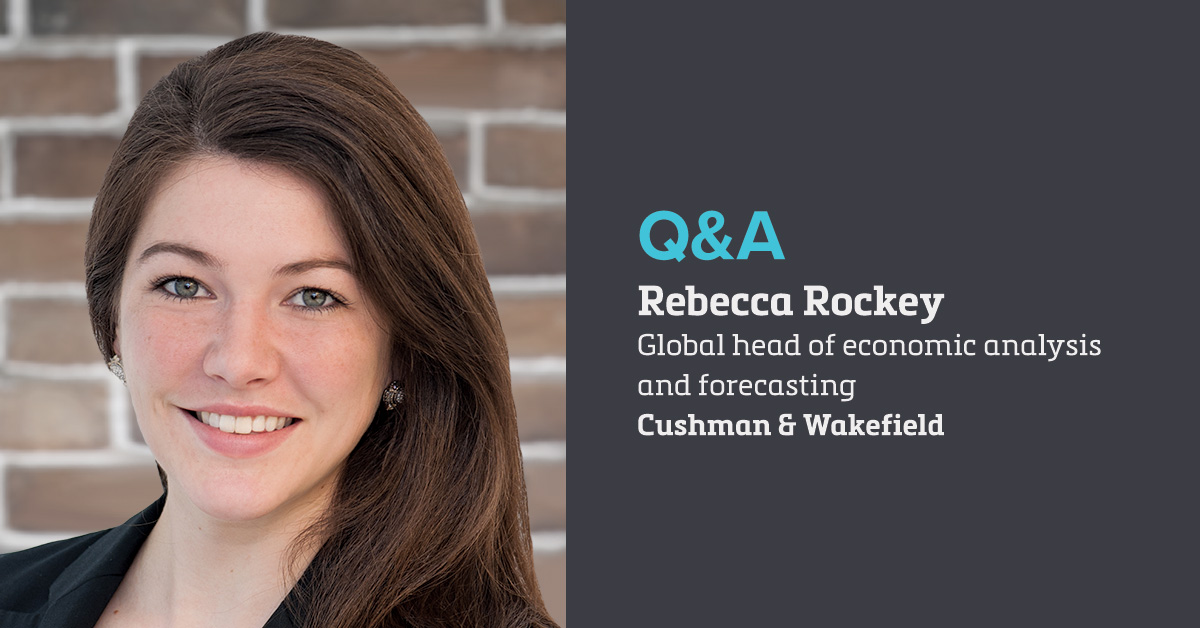The office sector will continue to face ongoing challenges this year, according to Rebecca Rockey, global head of forecasting for Cushman & Wakefield. Scotsman Guide spoke with Rockey in November about her perspective on the economy for 2024, where she sees commercial real estate going this year and whether the office sector has bottomed out.
Where does Cushman & Wakefield stand on the potential for a recession in 2024?
We have not been in the soft-landing camp for some time and that is still our position. We believe that the material change in monetary policy will continue to filter through the economy and that eventually we will see a contraction in output. Our forecast is that as we head into the second quarter, we will be reaching that tipping point. That being said, it’s a very uncertain business to predict turning points.
What are some of the market indicators you’re watching?
There are a number of indicators pointing to resilience and strength in the economy, and those tend to be tied to the consumer economy. They include factors such as the labor market, which is strong. We keep adding jobs but at a slower and slower pace. So, those are great signals of resilience, but they are not forward-looking. They don’t tell you anything about the future, but there are a number of leading indicators pointing to a turning point in the economy. They include the 10-year yield curve, which has been inverted for some time. Inverted yield curves tend to be very accurate predictors of recessions.
There are a lot of recessions where the yield curve is inverted about a year in advance. There are other instances where the inversion happened 24 months in advance. Given the sheer fiscal support and monetary accommodations across the economy in recent years, it’s going to take time to work through that. But we are seeing some interest rate-sensitive sectors already in contraction. And on top of higher credit costs, the availability of credit is significantly lower than it was 18 months ago. The tightening of credit standards tends to lead the economy by six to nine months.
What do you see for commercial real estate in the new year?
Both the multifamily and industrial sectors have tremendous supply waves coming. In both sectors, we expect demand to soften, but it will be positive. We estimate between 140 million and 150 million square feet of absorption in the industrial sector, with vacancy rates peaking at about 6.2%. We expect about 320,000 multifamily units to be absorbed and for vacancies to rise to about 9% at their peak.
How about the retail and office sectors?
Our data shows that the vacancy rate for retail is sitting at a 40-year low of about 5%. While we expect demand to soften and turn mildly negative next year, we still see vacancy rates only rising to the low-6% range, which is consistent with mildly positive rent growth.
The greatest challenge is in the office sector. We still believe the sector will be recording negative demand in 2024. This masks a tremendous amount of variation, though, around the country. We’ve seen incredible resilience in many smaller markets, especially in the South. In cities like Miami, vacancies have barely budged since the pandemic.
Then you have San Francisco and New York City, which are experiencing record-setting vacancy rates. Manhattan’s vacancy rate is about 22% right now. We think it will go up to about 24%. But even here we are seeing a lot of variation. We track roughly 1,400 office buildings in Manhattan. There are about 105 or so that have vacancy rates of 50% or higher. If you take them out of the equation, the vacancy rate falls to about 15%. So, there is an uneven concentration of weakness across markets and assets. ●





